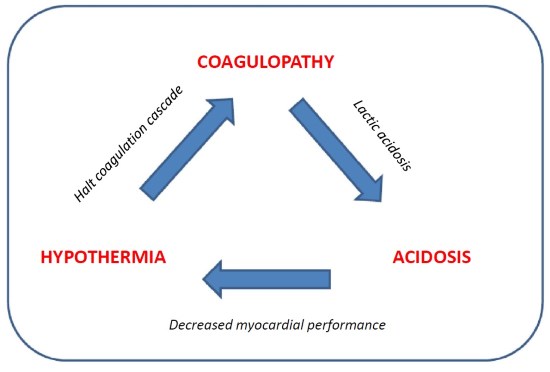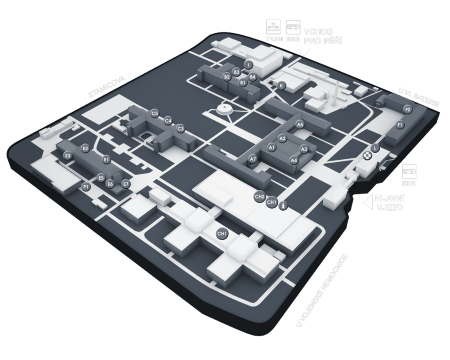Polytrauma - is the injury of at least two organ systems, at least one of which is life threatening.
Multiple injury - is the injury of at least two organ systems that do not pose immediate harm to the patient.
Trauma Centre - is a hospital or a department highly specialized in trauma care. Provides comprehensive diagnostic and therapeutic care for „triage positive patients“ and patients with severe injuries.
Damage control surgery - is a set of life-saving, step-by-step treatments for severe intra-abdominal injuries, historically known as "shortened laparotomy." The goal of early treatment is to limit the influence of the malignant triad (acidosis, hypothermia, coagulopathy). The definitive treatment of tissue injury is postponed in this concept to after hemodynamic and hemocoagulation stabililization of the injured patient.
Damage control resuscitation - is a systematic approach to the care of a traumatized patient with serious injuries, which begins in pre-hospital care and continues through emergency care and surgery, to the intensive care unit. DCR includes hemostatic resuscitation, permissive hypotension (where appropriate), and damage control surgery. It aims to maintain circulating volume, control bleeding and correct coagulopathy to allow for stabilization of the patient and definitive treatment.
Permissive hypotension – The concept of blood pressure control (using fluids and vasopressors) in a traumatized patient. The goal is to maintain BP at values lower than usual but still sufficient to maintain organ perfusion until the recognition and definitive treatment of the bleeding source. The reasoning is that blood pressures higher than absolutely necessary to maintain baseline organ perfusion may lead to exacerbation of yet uncontrolled bleeding and further hypovolemia and hypotension in a viscious cycle.
Malignant Triad - A term describing the combination of hypothermia, acidosis and coagulopathy leading to increased mortality in a traumatized patient.

Difficult airway - a situation where endotracheal intubation requires three or more attempts by an experienced professional using direct laryngoscopy.
BACT - Bougie Assisted Cricotyroidectomy - a method of urgent airway management by introducing an endotracheal tube into the trachea through the cricothyroid ligament.
ROTEM – a method of rotational thrombelastography (improvement on the older TEG method). Provides quick and comprehensive information about haemostasis status, incluidng analysis of primary hemostasis. Analyzers are used for acute diagnosis of coagulation disorders. They help determine the causes of bleeding or detect thrombotic risk in time.
FAST - Focus Assessment with Sonography for Trauma – an ultrasound protocol for the traumatized patient to detect free fluid in three body cavities - pleural, pericardial and abdominal.
eFAST - FAST protocol extended to include pleural examination to detect pneumothorax.
GCS - Glasgow Coma Scale – the most common scale to quantify level of consciousness (eye opening, best word response, best motor response), rated on a scale of 3-15 points.
AVPU - Alert, Verbal stimuli, Paintful stimuli, Unresposive - a mnemonic tool to assess level of consciousness
LMA - laryngeal mask airway, the most commonly used type of supraglottic airway device.
SGD – Supra Glottic Device



